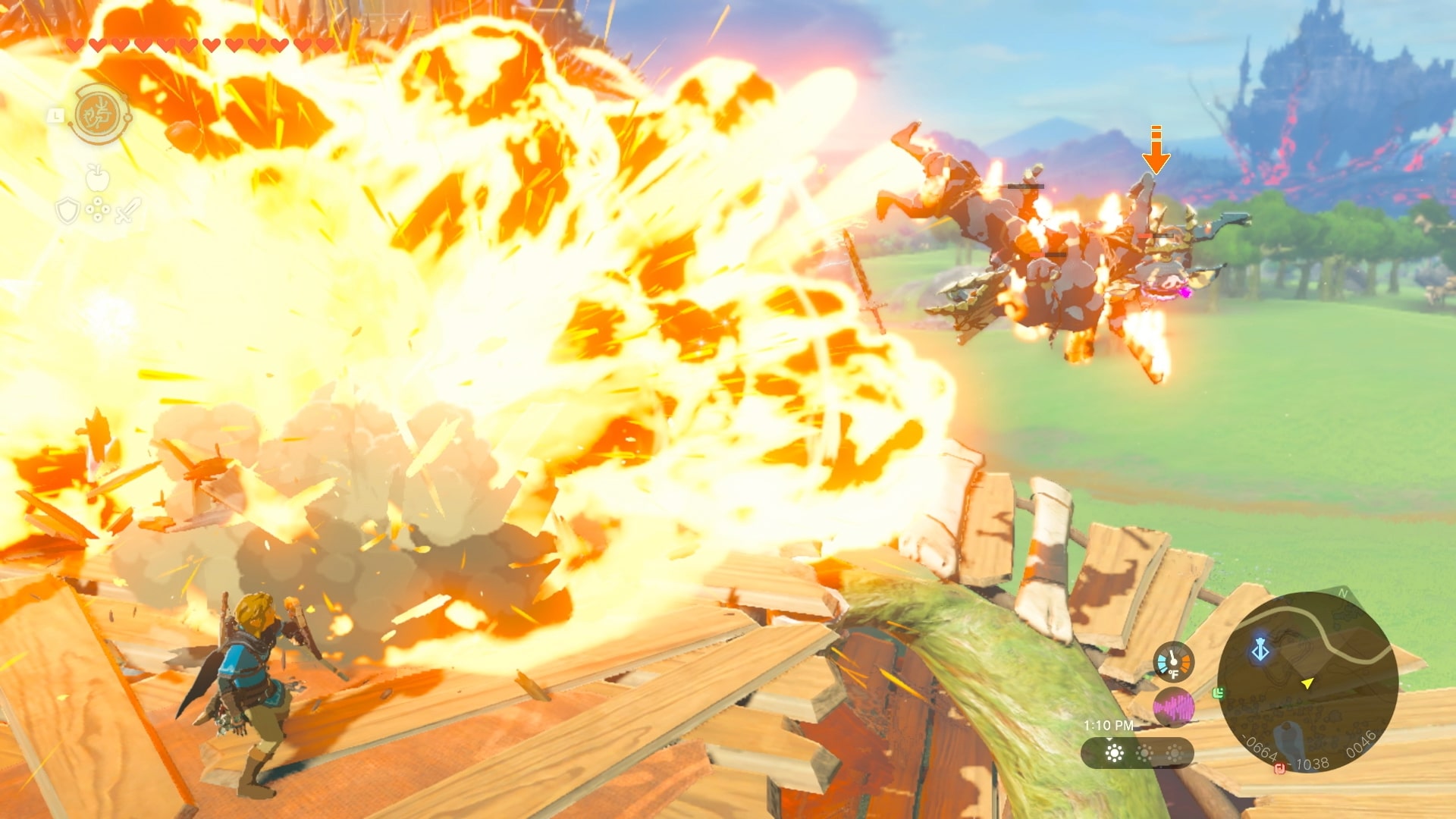
I'm standing on the edge of a cloud-grazing cliffside in The Legend of Zelda: Tears of the Kingdom. The yawning chasm between this chunk of land on Great Sky Island, and the next section of the elevated archipelago that I'm traveling to gives me goosebumps. If I mistime my approach, quite simply, I will plummet tens of thousands of feet to my death, among the rolling pastoral plains of the Great Plateau below.
To prevent this, I harness a hulking floating platform with my telekinesis-inspired Ultrahand ability, and pull it just close enough to the land so I can hop on. Once I've climbed onto its surface, I dig out two industrial fans from my inventory, and attach them to the edge of the airborne platform with the same Ultrahand powers. I strike one of the fans with my weapon – a crude tree branch scavenged from a fallen oak moments earlier – and the metal rotors of both machines spark to life. Suddenly, slowly, I'm moving. I'm gliding through the air towards my goal, upon which a block-built boss who resembles the Italia '90 World Cup mascot awaits.
But, hang on. I'm banking left, pulling away from my destination. Like a cruiseliner veering away from a coastline, I'm shifting off-course, now perilously far from the land I'm attempting to breach. In a frantic bid to realign the fans that I now realize are facing in opposite directions (idiot), I accidentally knock one over the edge (seriously). Triforce almighty, I think to myself. I've made a right arse of this. Stranded, I decide to throw myself over the edge and start again.
This theme of trial and many errors is consistent throughout my hands-on stint with Zelda: Tears of the Kingdom. In just over an hour of game time, I died and died and died again. And yet doing so was a total joy – so much so, that it's this masterful learn-by-doing, multi-faceted trial and error blueprint that I reckon will propel Link's latest incoming adventure into the stratosphere come May 12, 2023.
A link between levels
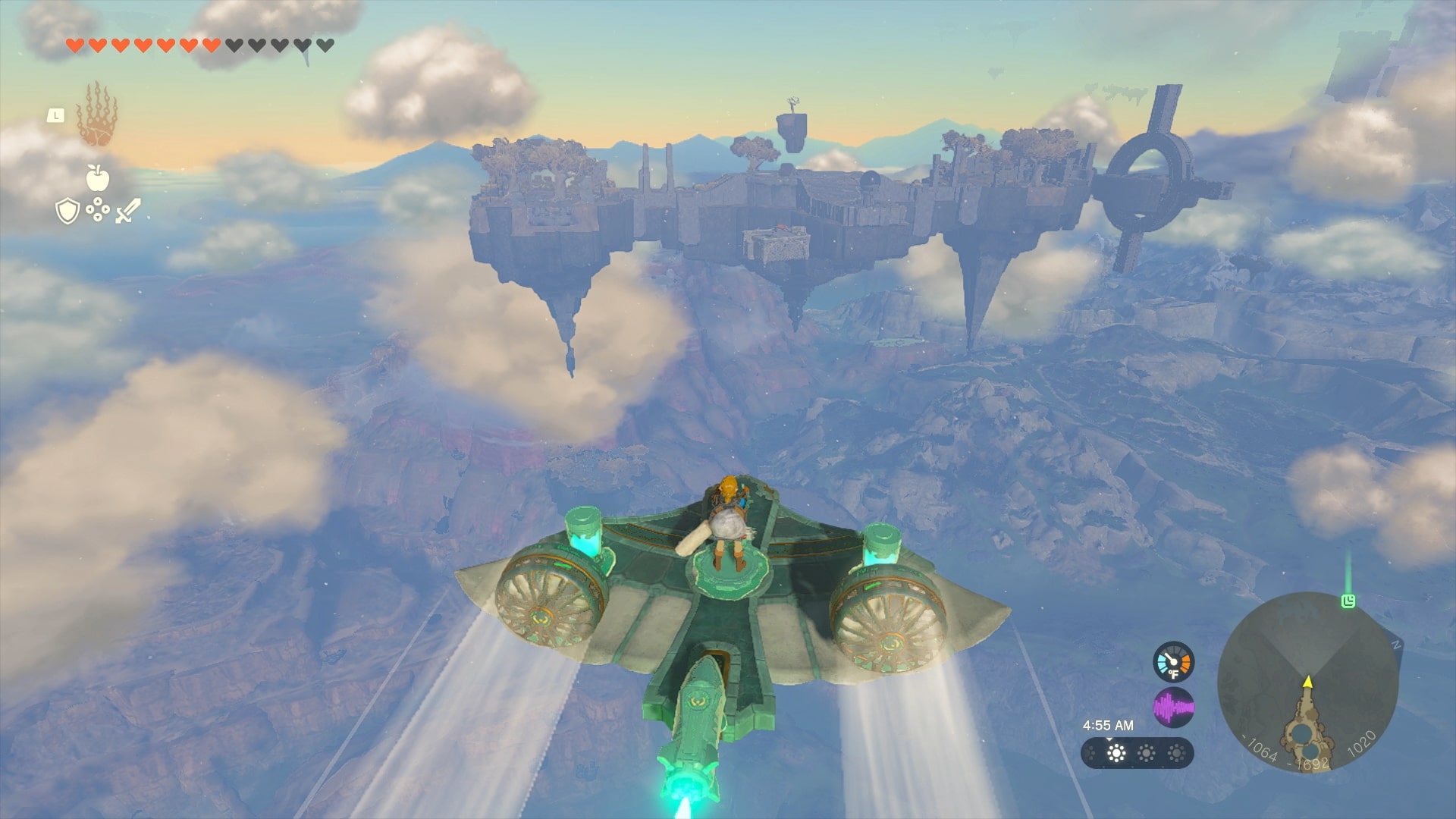
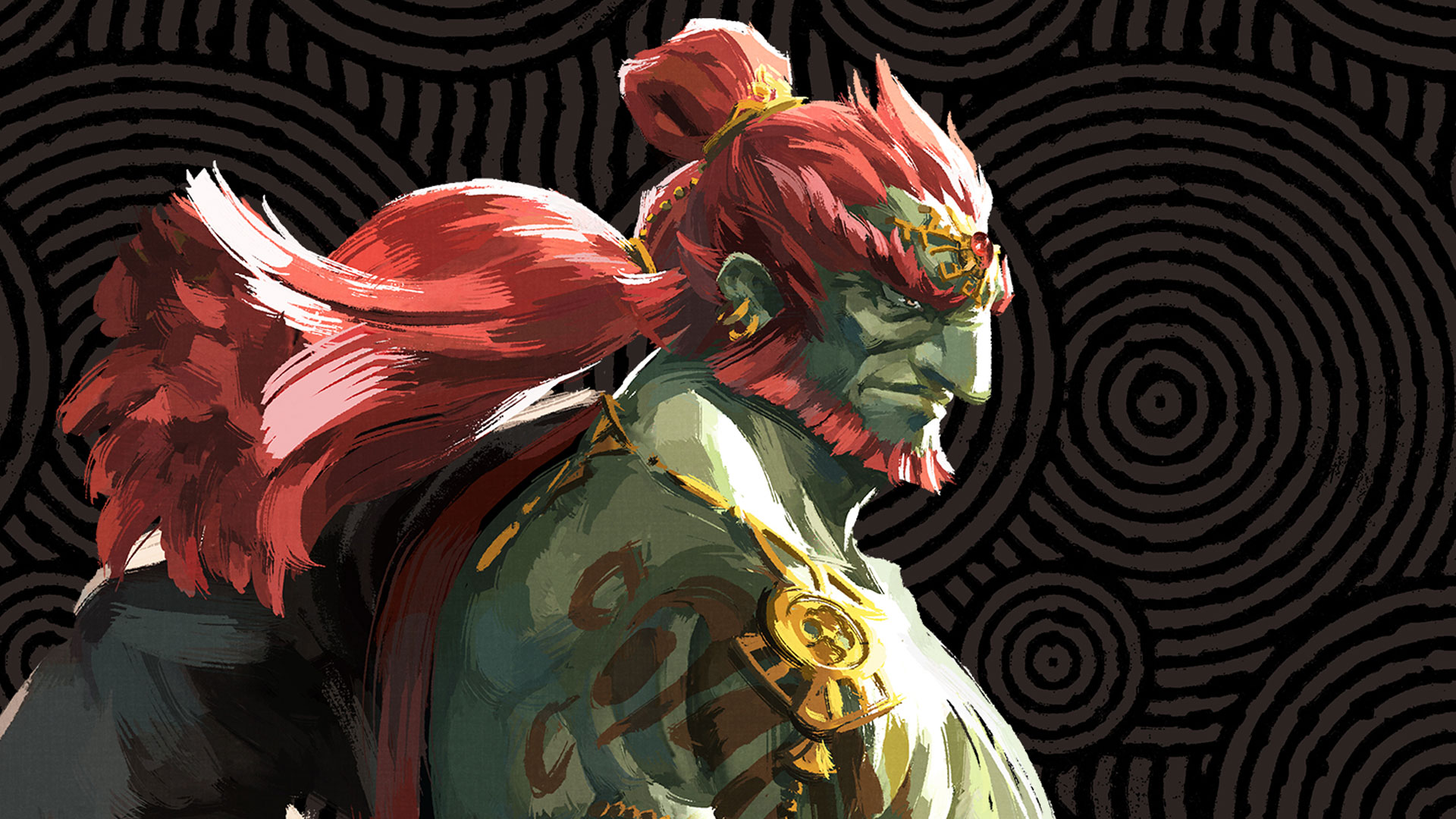
9 cool details you might have missed in the Zelda: Tears of the Kingdom trailer
Part of what made The Legend of Zelda: Breath of the Wild so exciting six years ago, of course, was its departure from linearity. The 2017 Nintendo Switch launch title was the first fully-fledged open-world Zelda game in the decades-long series, and while previous outings were driven by scores of whimsical characters, fantastical lore, and mostly predetermined pathways through ominous dungeons and peculiar villages, Breath of the Wild instead favored player curiosity, intrepidness, and discovery as tools for telling its grand tale. Fanciful NPCs and death-defying vaults had their place, sure, but both played second fiddle to exploration and experimentation in this new and sprawling slant on Hyrule throughout.
Even from the little I've played so far, it's clear Zelda: Tears of the Kingdom builds on just about all of this. It is a sequel – with the same striking art style, audio prompts, and combat mechanics which include breakable weapons, among umpteen other like-for-like features – but instead of simply being Breath of the Wild 2.0, familiarity facilitates expansion here, as opposed to an arbitrary retread of old ground. To this end, getting to grips with Zelda: Tears of the Kingdom's sophisticated new abilities feels easier because of the hours spent grappling with the first game's Magnesis, Stasis, and Cryonis runes; while pushing the boundaries of mixing and matching everything that can be Ultrahand-ed or Fused likewise comes more naturally as a result of Breath of the Wild's penchant for experimentation.
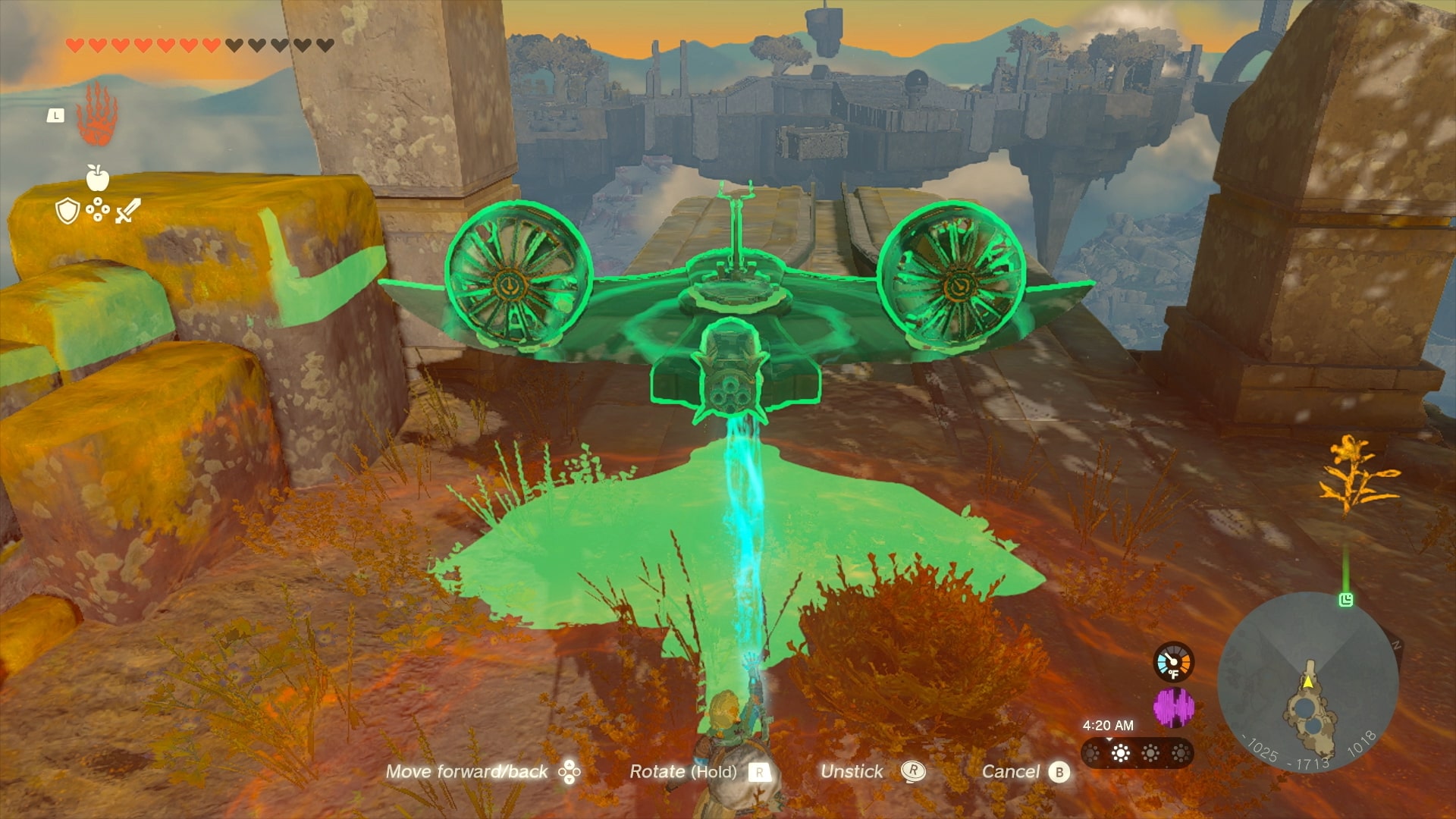
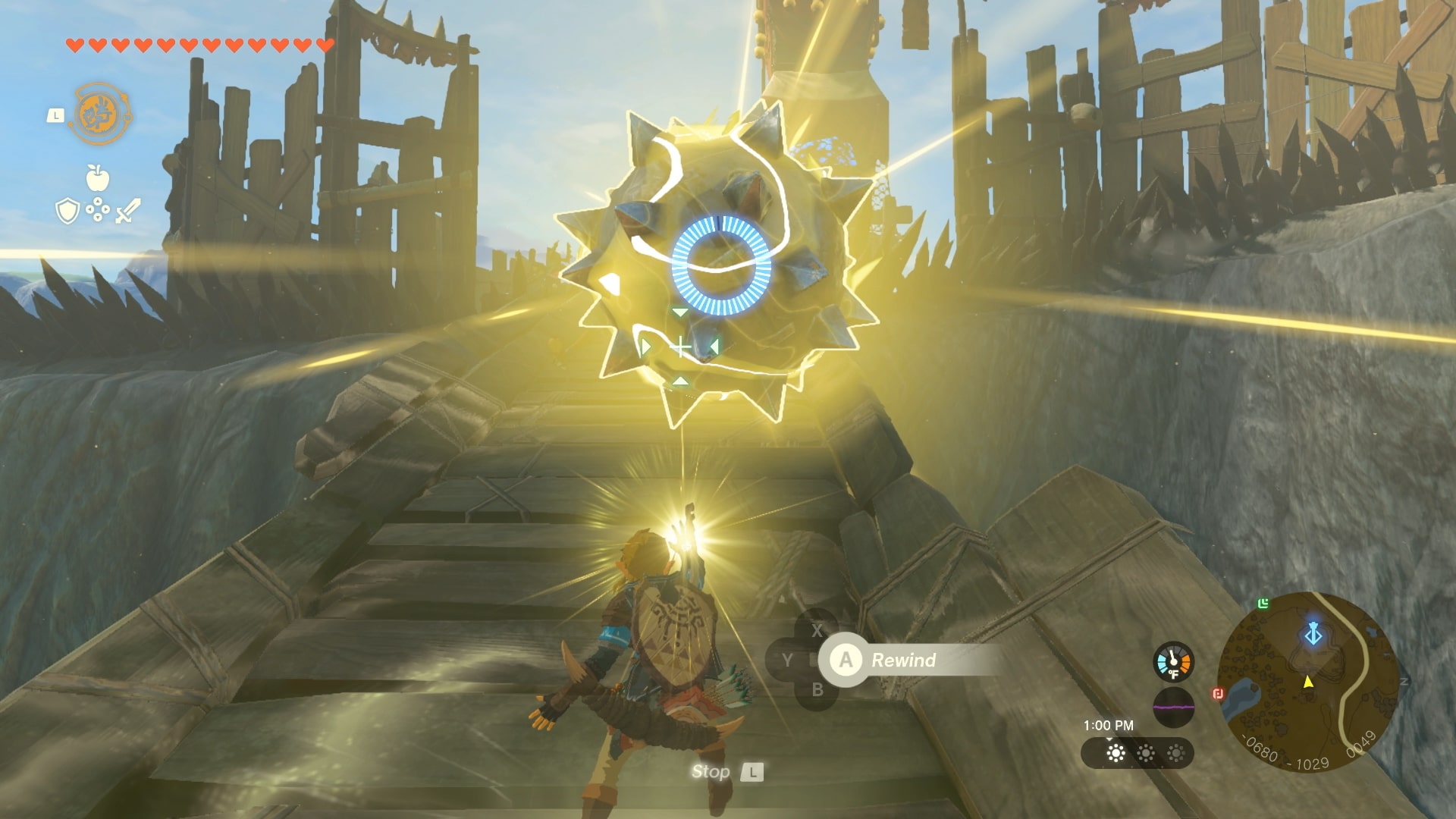
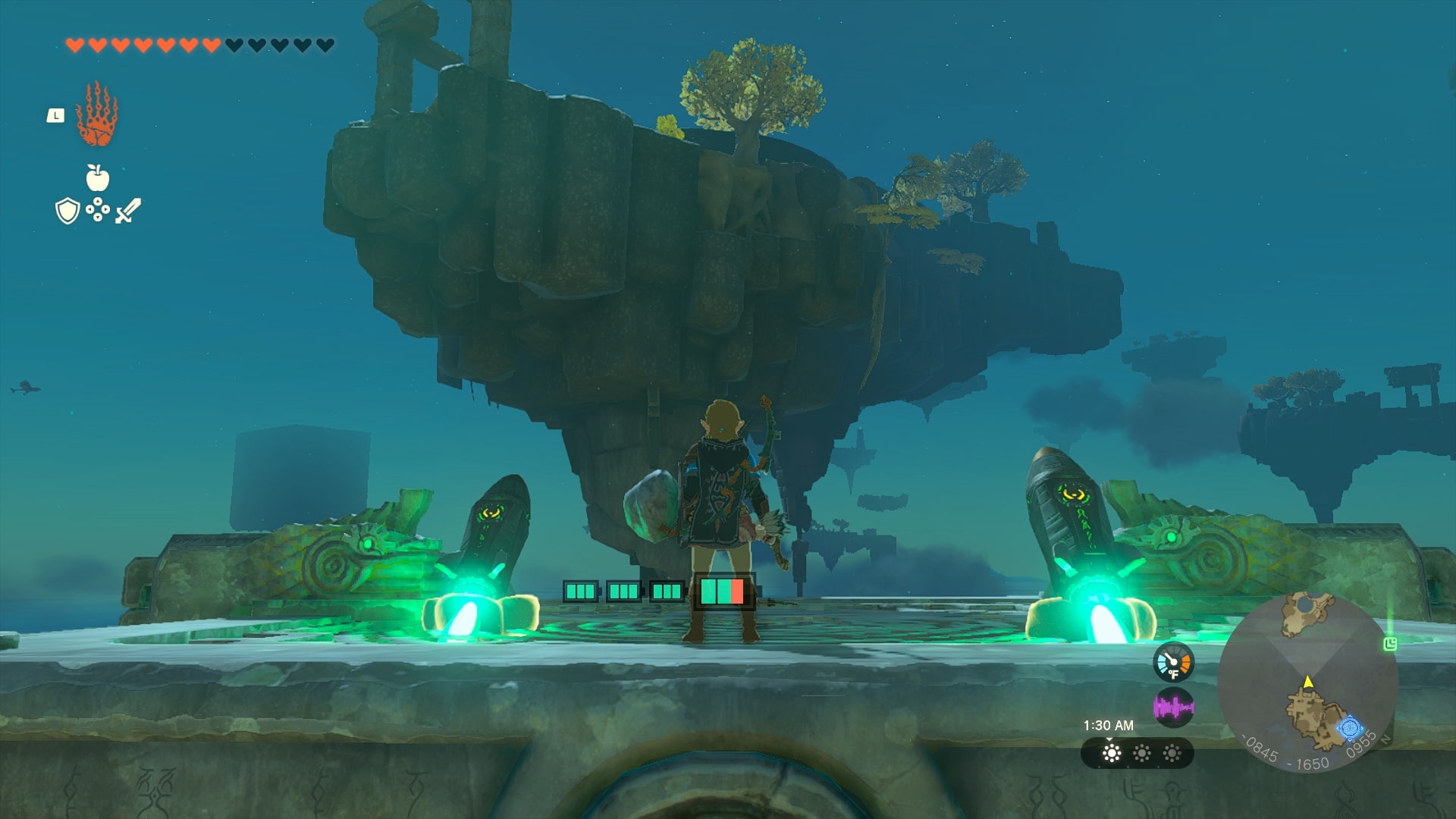
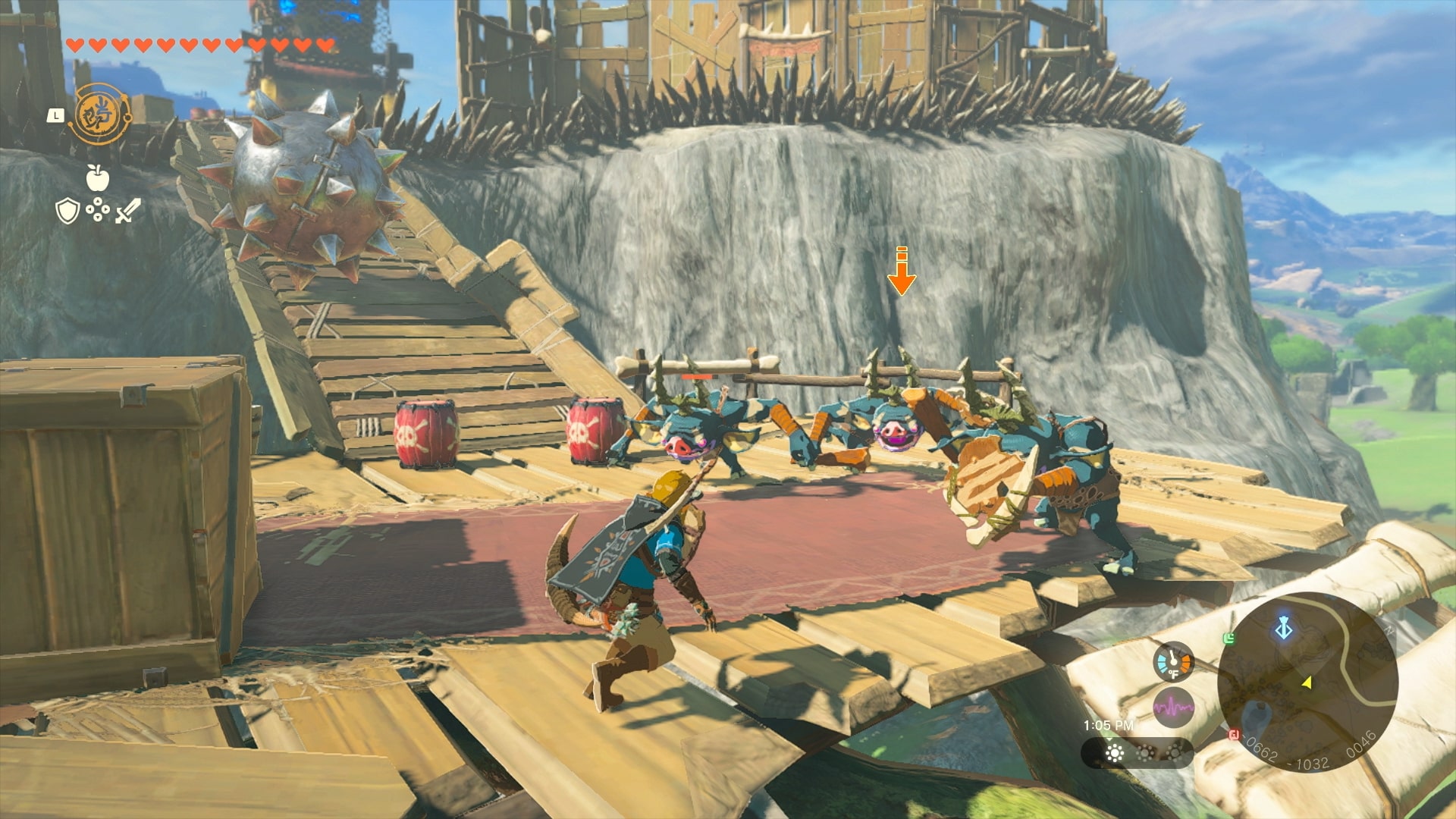
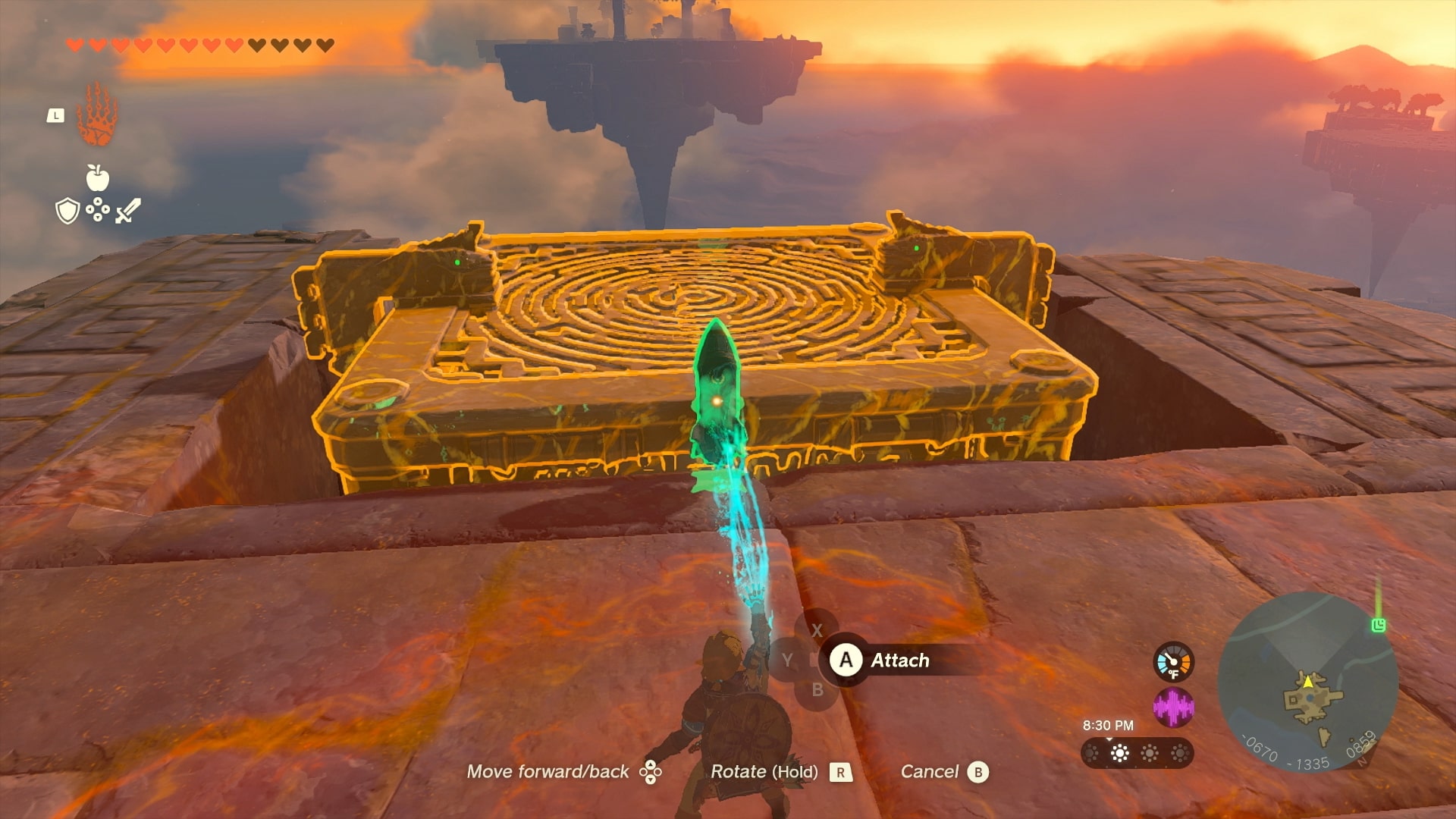
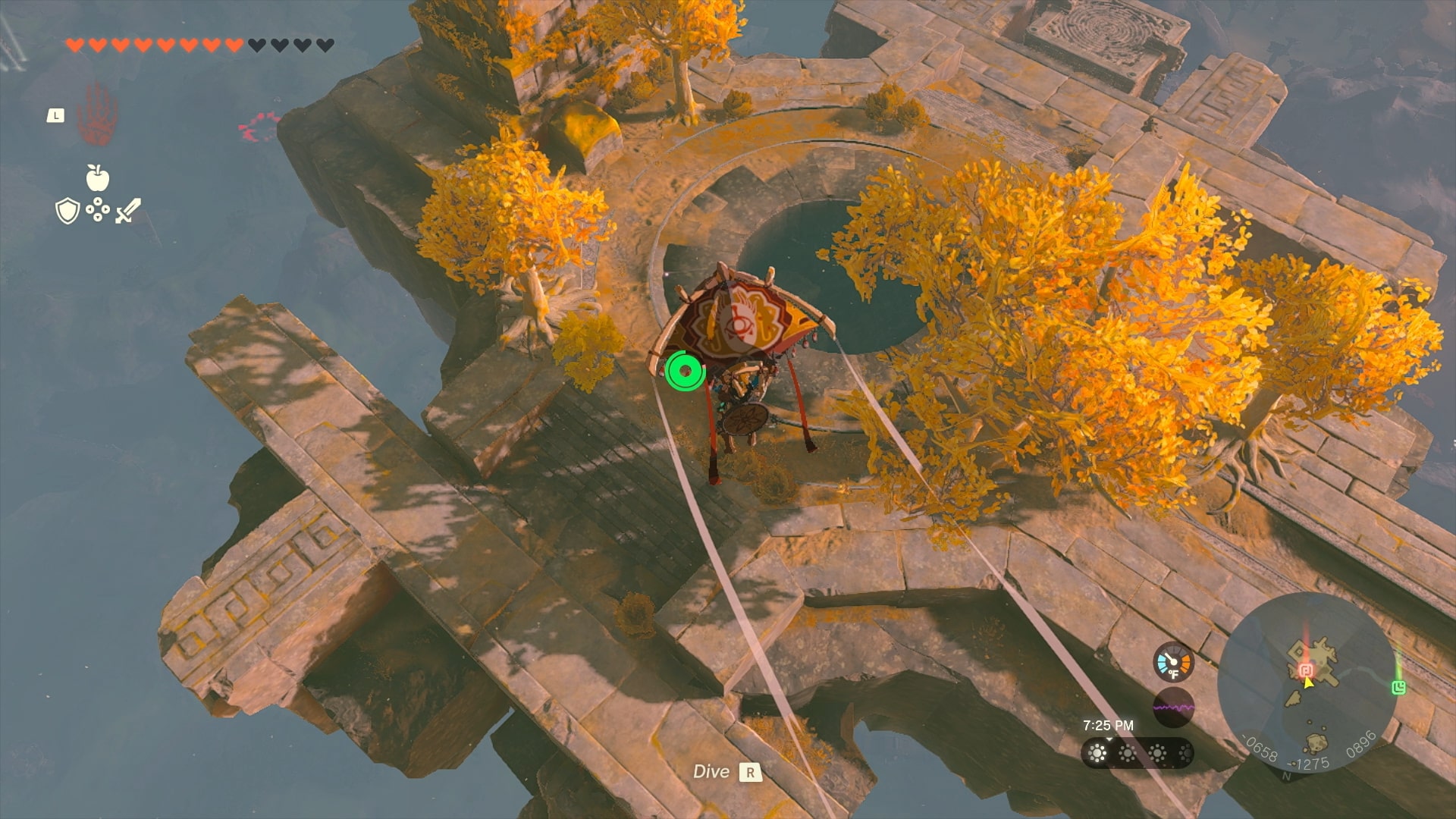
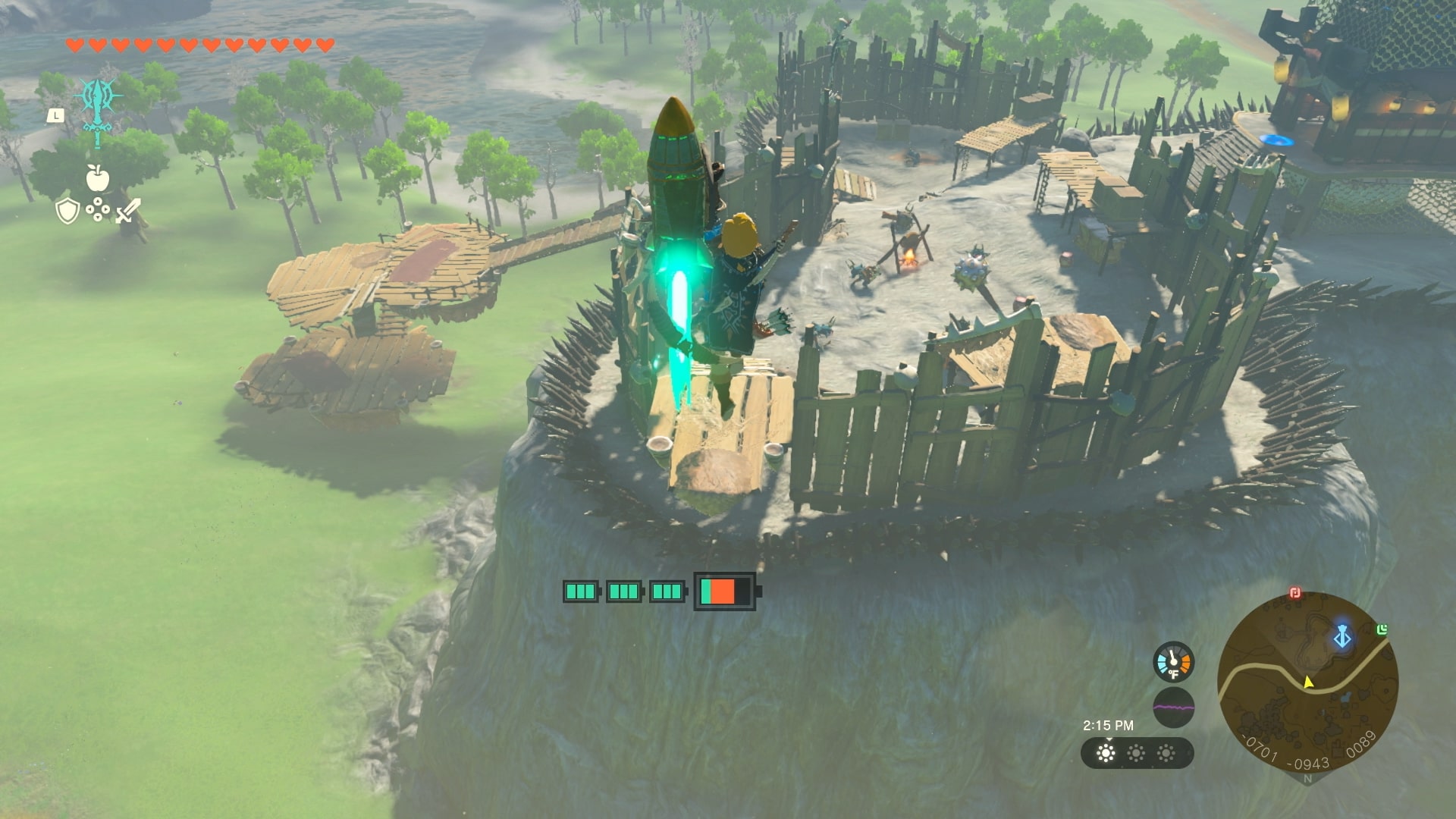
"In reality, the choice on offer was almost paralyzing – a physical outcome I inflicted on poor Link in-game several times as a result of poor planning, and my total disregard for the basic principles of gravity."
This scope for experimentation underpinned my entire Zelda: Tears of the Kingdom playthrough. During my first combat encounter, for example, I used the new Dishonored-esque Ascend ability to reach higher ground and get the drop on a hulking Blue Moblin. As the enemy prepared to hurl an explosive red barrel in my direction, the cheeky git, I quickly Ultrahand-ed one of my own, lifting it over the foe's head and dropping it before the bastard could get me first. Upon impact, both barrels exploded, throwing the opportunistic baddie to its doom. Choosing not to mourn my ill-fated opponent, I instead Fused my sword with its dropped Blue Moblin Horn – upping my weapon's attack power +13 points; raising it from a pithy 6 to an impressive 19.
Later, when the recently deceased's buddies tried to thwart my siege on their hilltop stronghold by sending a huge metal-spiked boulder rolling my way, I quickly used my Recall ability to send the ball back in time – flattening everything in its uphill path, in a physics-defying move that would've impressed the late graphic artist M.C. Escher. Later again, I found myself skyward, once more moving between airborne land masses by way of floating platforms; juggling rockets, and hot air balloon-like contraptions, industrial fans, battery packs, minecarts, and metal gliders steered by floor-standing levers that let me rise and fall and crash-land square into shallow rock pools. I Fused just about everything I could think of to my left and right-handed weapon slots (fire-breathing swords, or lightning-blasting shields, anyone?), I cooked up health-replenishing meals on the spot with the new single-use portable stoves, and I used Ultrahand to craft modded modes of transport as and when required.
At one point, I Fused a wooden spear with another wooden spear to create a really, really long wooden spear. So, rest assured, imagination and/or a scientific approach is never required.
Link's reawakening
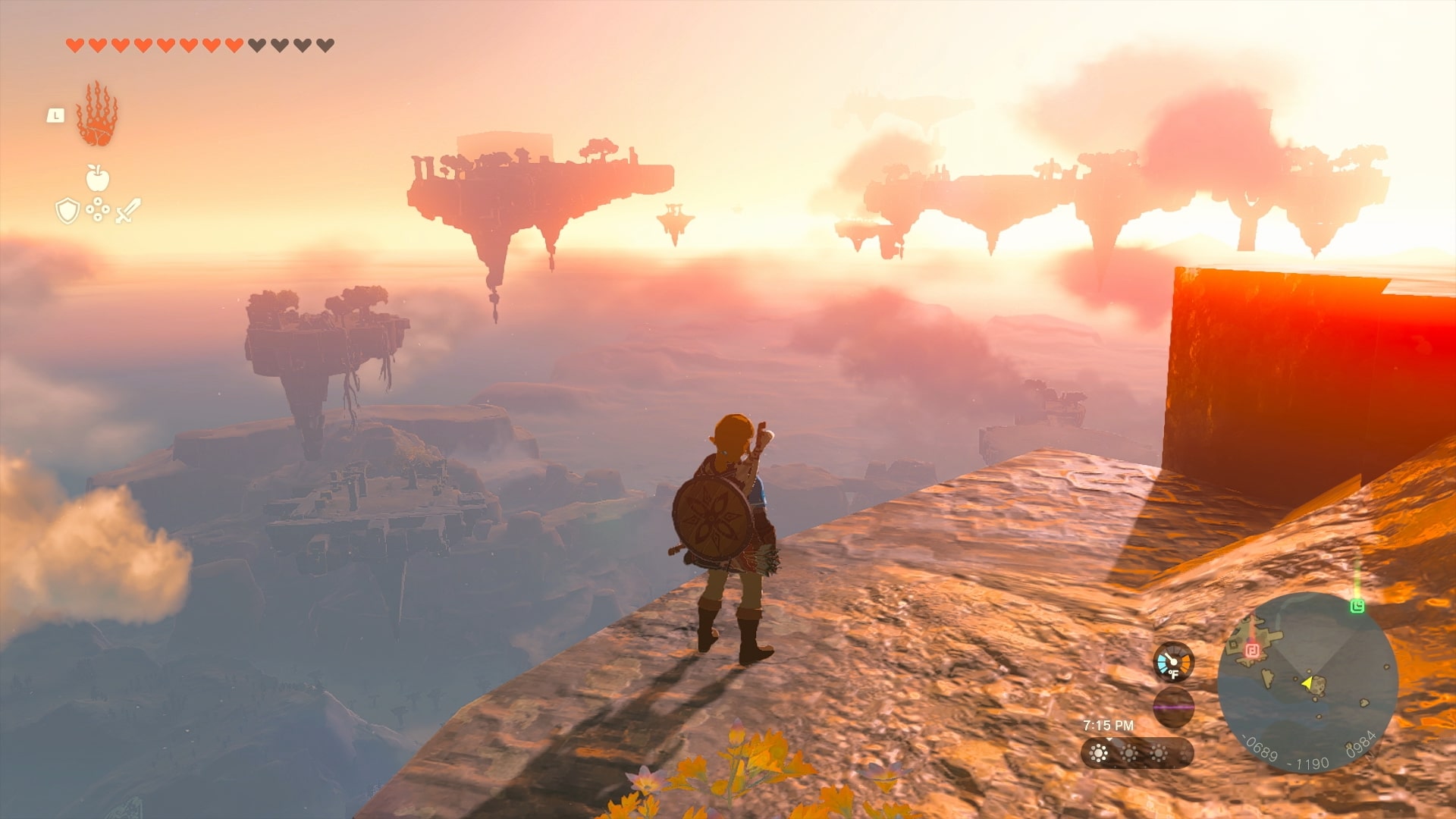
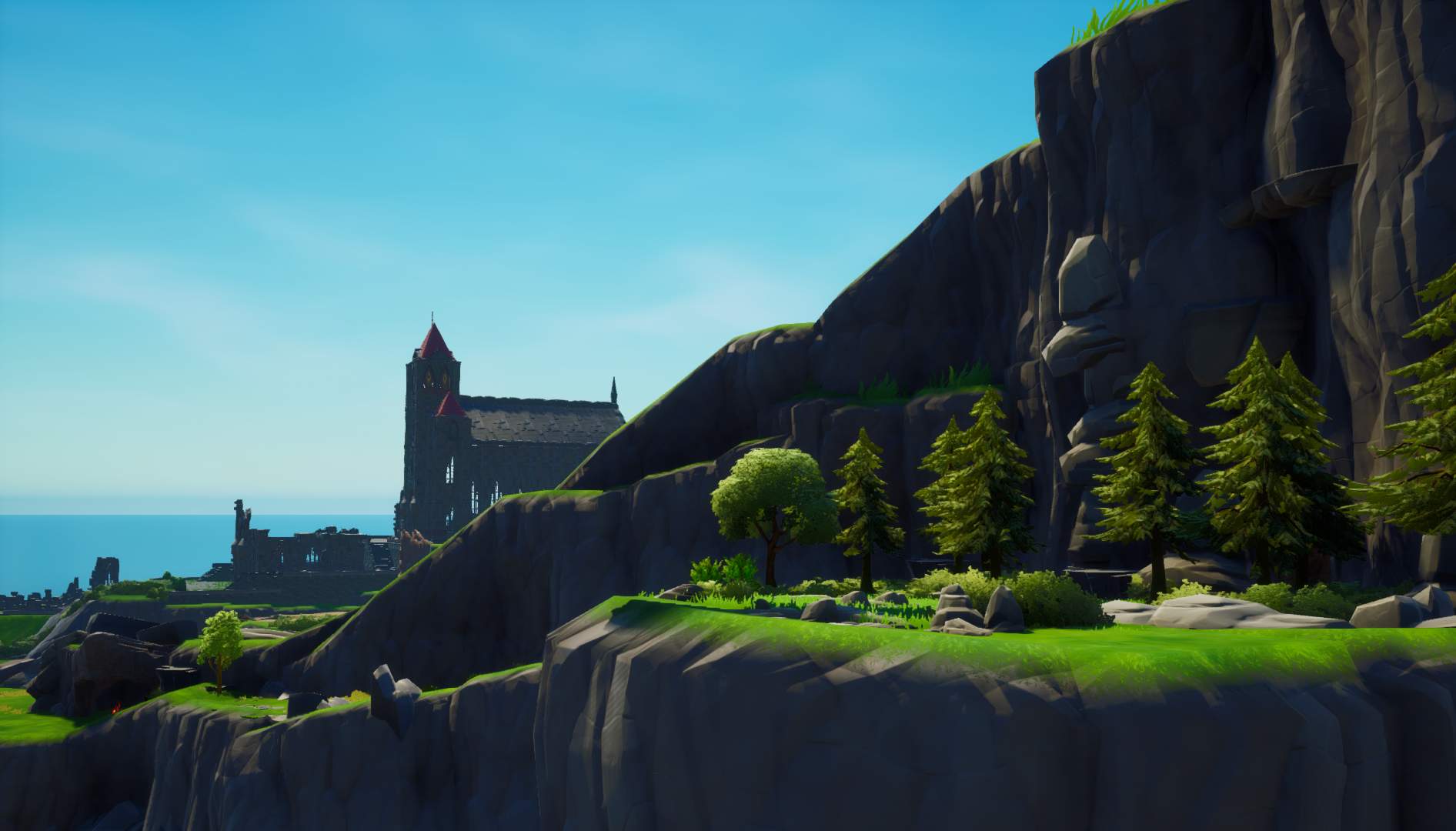
Playing Breath of the Wild in Fortnite is my new favorite way to explore Hyrule
In reality, the choice on offer was almost paralyzing – a physical outcome I inflicted on poor Link in-game several times as a result of poor planning, and my total disregard for the basic principles of gravity. It was all tremendous fun. And while the devs on-hand to help guide us through the demo section kept their cards very close to their chests during an ultra-brief group Q&A at the end of the session, one representative did tell me they'd spotted players creating things they'd never seen before with the Ultrahand and Fuse abilities, despite having spent literal years building the game and tinkering with its systems.
This, for me, is where Zelda: Tears of the Kingdom will shine. I don't doubt there's another breathtaking fantasy epic to be discovered here, and I'm certain its world and bosses will be bigger and bolder than anything found in Breath of the Wild. Zelda: Tears of the Kingdom enters the world just over a year after Elden Ring redefined our expectations regarding living and breathing open-world spaces, and I suspect Nintendo has paid close attention to FromSoftware's recent meteoric success behind the scenes since.
But it's Tears of the Kingdom's scope for creation that I think will lift it above the rest. I fully expect video-sharing sites to be chock-full of inventive and intuitive player-made concoctions within a matter of days once Zelda: Tears of the Kingdom hits store shelves, and I in turn expect news platforms and social media feeds to light up as they struggle to keep pace with all of the cool stuff players are building. I know I'll be one of them. And if you're someone who believes Breath of the Wild raised the bar in the open-world action-RPG genre six years ago, you'd better buckle up – because I'm certain you'll be one of them in the coming weeks too.
Here are some of the best games like Zelda







